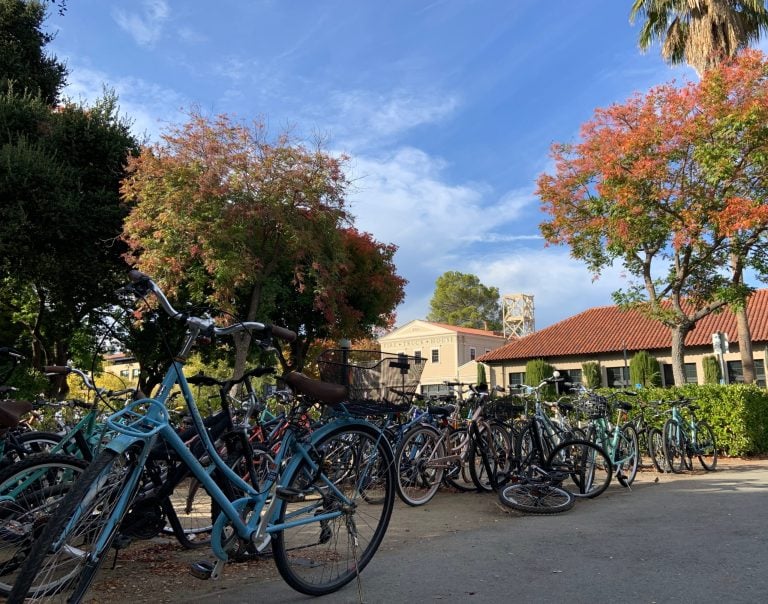Since the start of the COVID-19 pandemic, Stanford’s campus has become a graveyard of sorts.
Below the blue skies and palm trees lie the rusting remains of “dead bikes.” They are estimated to number in the thousands and can be found at parking spots near Main Quad, Tressider and student dorms.
Students estimate that the bulk were abandoned at the start of the pandemic, only for their respective owners to forget about them or never return. “When COVID hit, people didn’t expect to be gone so long, so they just went home and left their bikes on campus,” speculated Allen Huang ’21 M.A. ’22.
The problem is exacerbated by Stanford University Department of Public Safety’s (SUDPS) reduced capacity to impound bikes and is beginning to affect current campus residents who hope to use the bike racks.
SUDPS wrote in a statement to The Daily that if a bike is left in a spot for over 14 days, it is impounded by cutting the lock and placing it into secure storage. However, the tags that SUDPS affixes to bikes before they are impounded indicates that some bikes have been left sitting for far longer. Salma Kalni ’24 observed that “some have tickets that say that they’re going to be impounded but have been there for two years.”
SUDPS officer Jody Daggs, who coordinates bike impoundment, says the impoundment process has several limitations, some as a direct result of the pandemic.
For instance, the secure lot that SUDPS uses to hold impounded bikes can only hold 500 and recently reached its maximum capacity. But Daggs estimates that there are “over a thousand bikes” on campus that are in need of impoundment.
SUDPS is also facing constraints in discarding bikes that have made it to the storage lot. Bikes are only supposed to remain in the lot for 90 days, according to Daggs, but some have been languishing there for much longer. This is partially because organizations that used to pick up donated bikes before the pandemic have limited operations.
The pandemic introduced a new challenge to removing bikes: Daggs said he was not informed of when students would return to campus or what student housing would look like in the future, leading SUDPS to struggle to determine whether bikes should be removed. Daggs said, “The campus was flooded with bikes, and there were no students.”
The consequences of students leaving their bikes behind has begun to affect campus residents hoping to lock their bikes in convenient locations close to residences, dining halls and classrooms.
Ethan Bernheim ’25 said that he would rather keep his bike with him when eating at Tressider Memorial Union than lock it to a bike rack. “There wasn’t space, so we didn’t want to deal with it,” he said. “There’s so many dead bikes there.”
Students also feel there is little they can do to abate the problem. Huang, who is a Resident Assistant (RA) in West Lagunita, said that he and other RAs submitted a request to remove the bikes before the start of fall quarter. The request has not yet been fulfilled.
“There’s a form you can fill out to try to get the Department of Public Safety to come impound the bikes that are supposed to be impounded. But we’ve tried to fill that out and they just still haven’t impounded all the bikes yet,” Huang said.
Added Eric Montez ’25, “Why didn’t [SUDPS] get rid of these bikes when there was nobody on campus? That was an oversight that was supposed to be taken care of, but it’s not at the front of anybody’s mind because the administration doesn’t have to deal with locking their bikes.”
Daggs confirmed that SUDPS has received such calls. “We get calls from building managers every day who request we take the old bikes,” Daggs said.
However, SUDPS is brainstorming remedies. SUDPS hopes to clean out the storage lot so that bike parking can open up again, according to Daggs. He also mentioned several ideas to help scale up impoundment operations, including expanding into a larger lot and organizing a “big-brother program” where seniors would donate their old bikes to incoming students who may want a bike for a lower cost.
